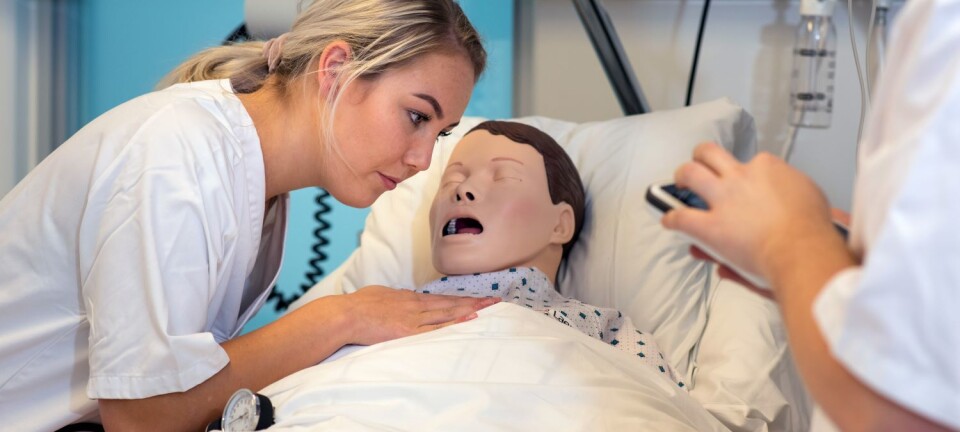This article is produced and financed by the University of Agder - read more

Patients exercised at high intensity during cancer treatment
Patients can maintain fitness and strength when exercising during cancer treatment. This emerges from a new study at the University of Agder.
“It is known that it is safe to exercise during treatment for cancer. This study shows that training with high intensity is particularly beneficial,” says Ann Christin Helgesen Bjørke.
She recently defended her doctoral dissertation at the University of Agder (UiA). Her dissertation is part of the research project Phys-Can in which strength and fitness training in cancer patients is studied.
577 cancer patients exercising
Bjørke’s dissertation is based on tests and follow-up of two exercise groups. A total of 577 cancer patients participated in the study.
The patients performed fitness tests and had their maximum oxygen uptake measured (VO2max). The measurements were done before and after a training period of six months.
They were followed up and trained by experienced instructors at gyms in Linköping, Lund and Uppsala in Sweden throughout the study.
In addition, the patients trained at home. They kept a training diary and handed in their heart rate monitor watches to the instructors for control.
One group trained fitness and strength with low to moderate intensity. The other group trained with high intensity. The study finds that the group that trained with high intensity had the best results.
Full exercise during cancer treatment

Of the 577 patients, 80 per cent received radiation therapy. 65 per cent received chemotherapy. 70 per cent received hormone treatment. Most of the patients had breast cancer.
“What surprised me the most is that so many cancer patients managed to complete their high-intensity training during the time they received cancer treatment,” the researcher says.
The high-intensity group started the training period doing five intervals. They ran at up to 85-90 per cent of maximum heart rate for two minutes. And then they rested for two minutes.
They increased the number of intervals after a while. Towards the end of the six-month training period, most were doing up to ten intervals in each session. In addition, they also did strength training at the gym twice a week throughout the period.
Lower fatigue and good fitness level
The findings show that those who exercised most vigorously reported a lower degree of cancer-related fatigue. However, the difference between the groups is not large.
All participants increased their strength during the training period. Those who trained at high intensity increased the most. The fitness level decreased a little in both exercise groups during the training period.
“Cancer treatment is so hard on the body that your fitness level can decrease even if you exercise. Fitness was best maintained in those who trained at high intensity,” says Bjørke.
She emphasises that those who took part in the study were in relatively good physical condition before getting ill.
“A patient group with lower physical fitness to begin with might have shown greater differences between the two groups. But this is only speculation,” says Bjørke.
Exercise as much as you can manage
The researcher cannot give clear advice on exercise to all cancer patients based on this dissertation. On a general basis, she can say that the study confirms that it seems safe to exercise when you receive cancer treatment.
“The general advice is to exercise as much as you can manage. Everyone responds differently to cancer and treatment. People have had different experiences with training before getting ill,” she says.
For most cancer patients, exercise is not harmful. However, she believes that patients should talk to their doctor before starting an exercise programme.
“There may be underlying reasons why you should be cautious with exercise,” says Bjørke.
Her study also shows that the amount of training may be important when you want to maintain the same level of fitness: The time you put into training combined with the intensity level is important for your fitness development.
“The effect you get from training increases the more time you spend and the higher the intensity. But more research is needed to be able to say whether intensity in itself is the most important factor in maintaining fitness levels,” says Bjørke.
Reference:
Ann Christin Helgesen Bjørke: Maximal oxygen uptake in patients exercising during cancer treatment – an evaluation of test criteria and the impact of exercise intensity. Doctoral dissertation at the University of Oslo, 2020.
———
Read the Norwegian version of this article at forskning.no


































